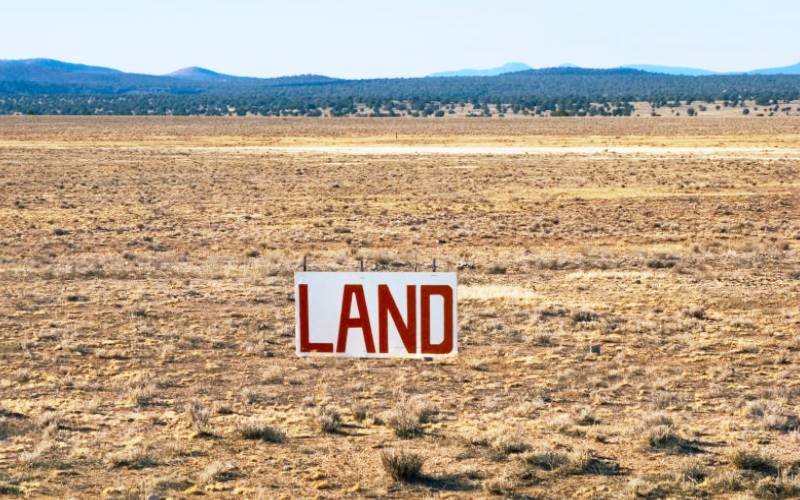
The discourse on land ownership in Kenya should balance land use, climate change and government service delivery.
Typically, a young urban middle class couple would live in a relatively small house. They probably would rent a house with two bedrooms, a sitting room and a kitchen. Assuming their income is healthy enough to absorb market shocks so, like many other people of their class, they experience upward mobility.
Over time, when blessed with children, they would move to a bigger house. In addition, they would find it necessary to think about a house in a location friendly to children to play and run around. Moreover, they will seriously consider social amenities in the neighborhood such as security, shopping possibilities, play fields, electricity supply and water access among others. Yes, the couple will think about the distance to school and whether their children will be safe as they go to and come from the school.
In the past, land subdivisions were part of the inheritance parents passed to children. This is still possible in some parts of the country, but there are places like Kisii and Nyamira counties where land inheritance will soon be a thing of the past. Other parts of the country are slowly, but steadily subdividing land to proportions that are not economically viable. Other than the cultural attachment to the ‘inheritance’, continued land subdivision has serious ramifications.
Away from cities and towns, a high concentration of people in any area has its own problems. The more serious ones include destruction of the ecosystem. Our parents and grandparents lived longer because they ate healthy foods, enjoyed fresh air, had minimal medical complications and were blessed with sounds of birds and other animals around them.
In Gusiiland, for instance, one can hardly see any forest other than eucalyptus trees that give a false sense of natural forests. The sheer number of houses through the counties, from an environmental perspective, is scary. The quality of life in areas like this is ever declining because seasonal rivers have dried, natural shrubs and bushes have been cleared, soil fertility is exhausted, staple foods such as maize are scarce and expensive.
Unlike the young urban middle class couple that can adjust to its needs, land availability has no such elasticity. We can only re-purpose how we use the available land in view of the ever increasing population. It is unlikely that 25 years from now the situation will have improved because of advancement in technology or other interventions because a natural ecosystem is irreplaceable. Human life must be given a priority in all development agenda.
The second dimension of land use in Kenya must consider climate change. In the long term, severe flooding and drought cannot be mitigated with humanitarian donor support. More sustainable action is needed now. People will continue to need food, basic health care, shelter and government service delivery.
There is significant wastage of public resources in servicing communities that are either too sparsely populated or too concentrated. With better planning for cost-effective living, government service can greatly improve. Here, the one option that seems inevitable is for communities to start living in high rise buildings.
For starters, this may sound very unsettling. Examples from countries like China have always been the best cases on how to live in high rise buildings in order to preserve the environment, yet provide for families that are always growing. However, a look at the hundreds of high rise buildings in Nairobi and other cities confirms that it is possible for communities to live together and spare land for other uses.
Service delivery
It’s unbelievable how, in the past five years, for example, many new high rise building have been constructed in Nairobi to accommodate tens of households in a small space. A survey through the city will show that people no longer have problems living in the same high rise building with each household living independent of the other. The shared resources and social amenities are all in place: Playing field for children, shops in the neighbourhood, hospitals, water supply, security and so forth.
It is time Kenyans realise that our population will continue to grow, but our land won’t. Let us start thinking outside the box in preserving our environment given the negative drastic impact of climate change while at the same time improving government service delivery by embracing high rise buildings.
Culture should not be used to impede a deeper reflection on how to we can improve our quality of living by rethinking our land use and pragmatically addressing climate change.
Stay informed. Subscribe to our newsletter
Dr Mokua is a lecturer, media and communication studies
 The Standard Group Plc is a
multi-media organization with investments in media platforms spanning newspaper
print operations, television, radio broadcasting, digital and online services. The
Standard Group is recognized as a leading multi-media house in Kenya with a key
influence in matters of national and international interest.
The Standard Group Plc is a
multi-media organization with investments in media platforms spanning newspaper
print operations, television, radio broadcasting, digital and online services. The
Standard Group is recognized as a leading multi-media house in Kenya with a key
influence in matters of national and international interest.
 The Standard Group Plc is a
multi-media organization with investments in media platforms spanning newspaper
print operations, television, radio broadcasting, digital and online services. The
Standard Group is recognized as a leading multi-media house in Kenya with a key
influence in matters of national and international interest.
The Standard Group Plc is a
multi-media organization with investments in media platforms spanning newspaper
print operations, television, radio broadcasting, digital and online services. The
Standard Group is recognized as a leading multi-media house in Kenya with a key
influence in matters of national and international interest.








